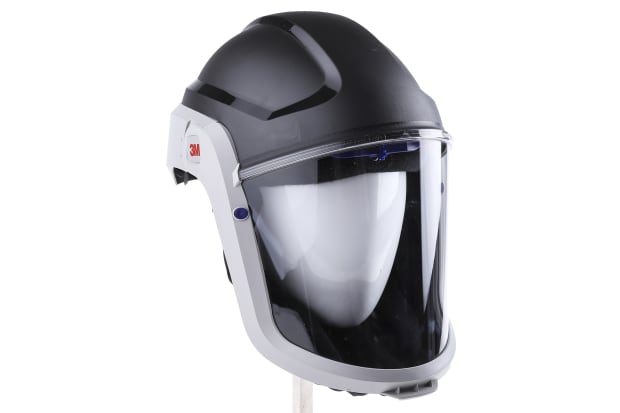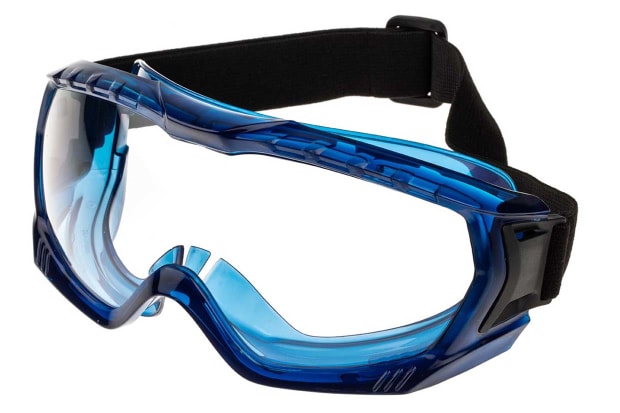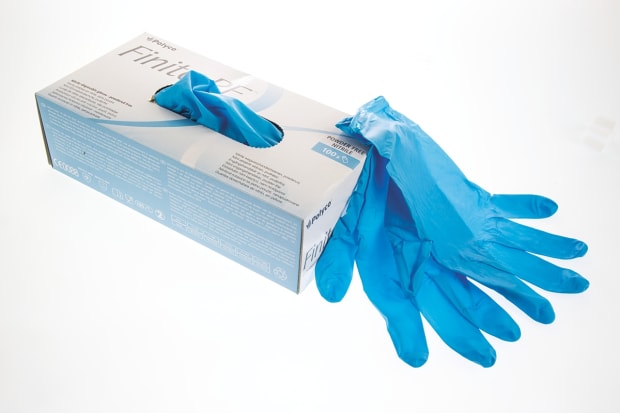- Published 17 Jan 2023
- Last Modified 15 Aug 2023
- 12 min
Workplace Protective Measures & Hygiene Standards

Over recent months, the COVID-19 crisis has seen drastic changes made across all areas of industry. Some sectors have seen significant decreases due to the restrictions while others have been working hard to continue providing core products and services throughout this challenging time. However, as restrictions in the UK begin to lift, many businesses are now preparing for the ‘new normal’ and a safe return to work.
Companies planning to reopen to staff must first implement key protective measures and enforce strict hygiene standards to minimise risks and safeguard returning employees. Health and safety has never been more important.
The steps outlined in this guide will provide you with the knowledge you need to meet additional hygiene standards, comply with social distancing requirements, and ensure a seamless transition back to the workplace for your employees.
Why are Hygiene Standards and Protective Measures Important in the Workplace?

Whether it is an office, factory, retail environment or another workplace, maintaining good hygiene standards is important across all industries. Not only does cleanliness help make the workplace nicer for employees and potential customers or clients, if applicable – it also speaks volumes about your business and demonstrates its core values. Employees are the backbone of any organisation, and a failure to implement effective hygiene measures can decrease job satisfaction as well as increasing the risk of ill health.
Maintaining a hygienic workplace has always been important but as many businesses begin to return to work, keeping employees safe and minimising the risk of spreading the virus is key. Investing in protective measures will ensure you are in the best possible position to welcome staff back to the workplace in a safe, hygienic and timely manner.
Rules and Regulations
While certain businesses and industries still face restrictions imposed by current government guidelines, plenty of preparation can be completed to ensure your business is ready to safely reopen and/or welcome staff and customers back as soon as it is safe and legally allowed to do so.
For many employees, returning to work will perhaps mean returning to a different working environment than before. Working safely must become the main priority, meaning that social distancing and other protective measures will be a key component of the working day.
There are several essential factors to bear in mind before reopening your workplace, as explained below:
- Ensure all areas are thoroughly cleaned and disinfected, including entrances and exits, washrooms and staff kitchen areas
- Implement additional cleaning measures for high-traffic or heavy-contact areas like door handles and washrooms
- Provide hand sanitiser and hand cleaning stations around the workplace, washrooms and communal areas
- Encourage staff to follow official guidance on personal hygiene and handwashing
- Where applicable, ensure employees have all the training, tools and equipment they need to work from home
- Use technology and remote working tools to prevent the need for in-person meetings
- Request that staff members maintain social distancing (2-metres is recommended) and do not share workspaces. Social distancing measures should be maintained through the use of clear signage, barriers or floor marking tape, and the implementation of one-way systems where possible
It is also vital to carry out a full COVID-19 risk assessment for your workplace before returning to work. For more information on this, please refer to the appropriate section further down this guide.
In addition to the basic guidelines outlined above, the UK government has also shared useful guidance for safe working across a range of different industries. Here are some of the key points for particular industries:

Manufacturing
While many manufacturing and supply chain businesses have remained operational over the last few months, maintaining a safe working environment is still vital.
Protective measures could include:
- Reducing risk at high-traffic areas by adding more entry/exit points
- Using clear signage and lane marking tape or barriers to introduce a one-way system around the workplace
- Regularly cleaning high-risk areas such as entry/exits, washrooms, turnstiles, security access devices and pass readers
- Reducing job and equipment rotation
- Reviewing layouts and working environments to ensure employees can maintain social distancing wherever possible
- Staggering break times or encouraging staff to use designated outdoor break areas
Click here for more detailed information on the government’s guidance for those working in manufacturing, factories, plants and warehouses.

Offices
Many office-based employees have been working from home, yet as restrictions begin to ease, returning to the workplace must be managed safely and efficiently.
Protective measures could include:
- Ensuring staff are supported and able to continue working from home if required
- Providing additional storage for employees’ bags and belongings away from desks and workspaces
- Providing hand sanitiser and handwashing facilities at high-traffic areas and key points throughout the workplace
- Rearranging desks or work stations to maintain social distancing
- Avoiding the use of hot desks where possible or thoroughly sanitising workstations and equipment between uses or shifts
Click here for more detailed information on the government’s guidance for those working in indoor environments such as offices, contact centres, and operations rooms.

Retail
Minimising risk and protecting both staff and customers returning to retail environments is of paramount importance.
Protective measures could include:
- Using clear signage and floor markings or barriers to introduce a one-way system throughout the store
- Limiting the number of customers inside the building at any given time to help maintain social distancing
- Ensuring hand sanitiser is readily available at entry/exit points
- Minimising contact between staff and customers where possible, encouraging the use of contactless payments
- Staggering break times to maintain social distancing in breakout areas
Click here for more detailed information on the government’s guidance for those working in retail environments including shops, stores, and branches.

Construction
Due to the nature of construction work, it may be difficult for employees to work from home, so it is important to consider the essential staff needed on-site to maintain the continuation of safe operations.
Protective measures could include:
- Staggering working hours to reduce high-traffic periods of entry, exit and break times
- Discouraging non-essential site visits or restricting access to certain areas with the implementation of working zones
- Reducing the number of employees using particular pieces of equipment, where possible, or ensuring equipment is thoroughly cleaned between uses
- Using a consistent pairing or grouping system for tasks requiring multiple employees
- Minimising contact at pick-up and drop-off points wherever possible
Click here for more detailed information on the government’s guidance for those working in construction and outdoor working environments.
Risk Assessments
Conducting a workplace risk assessment is a crucial task which must be completed before employees begin to return to work. The risk assessment should identify and evaluate the potential risks presented by COVID-19 within the work environment. It will help to manage risk, protect staff and customers (where applicable), and ensure practical steps are taken to achieve a safer workplace.
The risk assessment must:
- Identify situations or activities which may cause transmission of the virus
- Consider who could be at risk
- Ascertain the likelihood of exposure to the virus
It will then be possible to consider actions to help control the risk or ideally remove the high-risk situation or activity.
You can find more guidance on conducting a workplace risk assessment here.
Protective Measures for Your Workplace
We have an extensive range of high-quality products to help you prepare for a safe return to the workplace. From social distancing measures to PPE and hygiene products, our range encompasses all the essentials you need.
Protective Measures with RS PRO
Check out our video and discover how the RS PRO-BOT can help you identify the protective measures and products you need to get your business back up and running!
From temperature measurement to everyday social distancing essentials, you can shop our extensive range by product area in the sections below.
Face Shields and Masks
Wearing a face shield or mask can help to protect employees and minimise the risk of spreading the virus. It is also advisable for staff to wear face coverings in situations where social distancing is difficult to maintain.
Disposable masks are lightweight and ideal for a range of situations. There are various protection ratings for masks which will indicate the level of protection the product offers. For instance, an FFP2 mask will offer more protection than an FFP1 mask, while FFP3 masks offer the highest level of protection. Disposable or washable face masks are increasingly being used to help minimise the risk of spreading the virus.
Respirators are designed to fit over the wearer’s mouth and nose to protect against the inhalation of potentially harmful airborne particles. Conversely, a face shield is a form of PPE primarily used to protect the wearer from impacts, debris or splashes. They protect the full face and may also be worn alongside other forms of personal protection equipment including respirators and safety goggles.
Shop Face Shields & Masks
Respirators
Our disposable respirators are high-quality and designed specifically to protect the wearer. Shop the full range now.
Powered Respirators
Air-fed and powered respirators offer additional protection to the wearer in potentially hazardous situations. Browse the full range now.
Face Mask Essentials
From disposable face masks to disposable respirators, face shields and more, discover all the essentials you need with RS.
PPE
The provision of appropriate PPE (personal protection equipment) is a legal requirement for employers, but additional measures may be introduced to help keep employees safe and minimise the risks of COVID-19.
Eye protection such as safety goggles and safety glasses reduce the risk of injury from airborne particles, debris and potentially harmful splashes. Different types of safety eyewear are suitable for varying industries and applications, including mechanical, electrical, thermal and chemical risks.
While thorough, frequent hand washing is highly recommended to minimise risks, disposable gloves could offer an additional layer of protection. Acting as a barrier between the wearer and the external environment, protective gloves are ideal for maintaining strong hygiene standards. Disposable gloves are available in a wide range of materials and types, covering a full variety of applications.
For more guidance on the different types of PPE and current legislation, check out our complete PPE guide.
Social Distancing Signs and Tape
As we all adjust to the ‘new normal’, clear signage, barriers and tape can offer assistance with ensuring social distancing measures are complied with and managed effectively.
Introducing clear, highly visible signage and guidance in key areas can help to ensure social distancing measures and hygiene standards are adhered to at all times. Signage can be beneficial to both staff and customers, so it is important to display clear guidance at entrances, exits and high-traffic areas.
Safety barriers and social distancing tape can help to control access to certain areas, manage social distancing, and enforce one-way systems. Lane marking tape is quick and simple to apply, providing the flexibility to mark out clear walkways and queues which adhere to social distancing guidelines. Social distancing floor mats and pedestrian barriers can also be used to help manage the flow of people through certain areas.
Shop Social Distancing Signs & Tape
Social Distance Mats
Social distancing floor mats provide clear guidance for staff and customers alike. Shop our complete range online.
Lane Marking Tapes
Available in various colours and sizes, lane marking tape is a staple protective measure to ensure social distance guidelines are followed.
Mandatory Signs
Mandatory signage provides clear guidance and can help with enforcing social distancing and health & safety measures. Shop now.
Safety Barriers
From fixed and wall mounted barriers to bollards and stanchions, discover the best safety barriers for your requirements.
Temperature Measurement
Temperature measurement can help to safeguard staff and reduce the risk of spreading the virus by screening individuals. Non-contact temperature measurement allows body temperature to be accurately checked safely and efficiently.
Digital and infrared thermometers can be used to measure temperature. Digital thermometers measure using a probe and are simple and straightforward to use. Conversely, infrared thermometers measure the thermal radiation emitted, meaning that temperature can be measured from a safe distance without the need for direct contact.
Thermal imaging cameras detect heat energy, allowing the operator to see the infrared spectrum in real-time, again without the need for direct contact. These non-contact methods of temperature measurement are ideal for checking colleagues’ temperatures while maintaining social distancing.
If you would like to learn more about temperature measurement, please refer to our complete guide to digital thermometers and our essential thermal imaging cameras guide.
Hygiene Standards
Maintaining high levels of hygiene is essential, and regular cleaning will become even more important as restrictions start to ease and employees begin returning to work.
Hand sanitiser should be readily available for use, ideally placed at strategic points around the premises in addition to high-risk areas like entrances, exits, washrooms and kitchen areas. Anti-bacterial hand sanitisers can kill up to 99.999% of viruses and bacteria, making them essential for any workplace.
Cleaning supplies such as hand cleaners, equipment wipes, and multi-purpose cleaners are also key for helping to minimise risks and prevent the spread of the virus. Elevated levels of hygiene are vital and extra focus should be placed on high-risk, high-traffic areas.
For additional information on hand cleaners and soaps, please see our comprehensive guide to hand cleaners.
Shop Hygiene Supplies
Hand Sanitisers
Hand sanitisers are ideal for maintaining hygiene standards when handwashing facilities are not available. Browse hand sanitisers online.
Hand Cleaners
We stock a wide range of hand cleaners suitable for industrial environments and maintaining the highest levels of hygiene. Shop now.
Multi-Purpose Wipes
Suitable for a wide range of cleaning solutions, shop multi-purpose wipes with RS online.

















